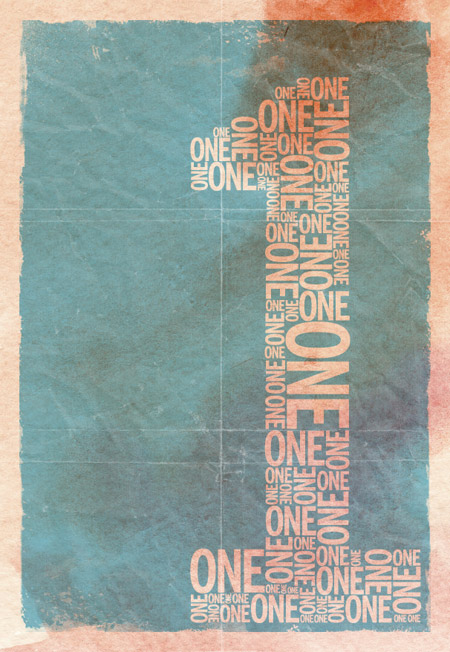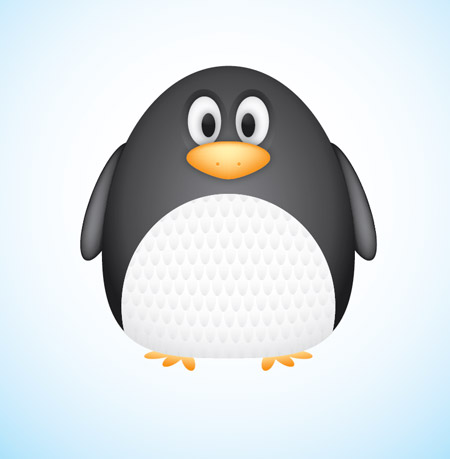Blog.SpoonGraphics | Latest Blog Entry |
| How To Create a Retro Style Typographic Poster Design Posted: 28 Aug 2011 11:00 PM PDT Follow this step by step tutorial to create a retro style typographic poster design with distressed textures and a muted colour scheme. We’ll create a typographic layout based on the number ‘one’ using Illustrator’s easy manipulation tools, then switch over to Photoshop to lay out the poster design composition and grunge everything up with some textures to create that cool dated retro look. The design we’ll be creating is based on the number ‘one’. It features a typographic design made up of duplicates of the word ‘one’ to build up a numerical number one symbol. The overall design is then composed into a poster and given that cool old school retro appearance with stains, textures and distressed elements. View the final retro typographic poster design
We’ll create the main typographic layout in Illustrator to make use of the vector abilities to maintain crisp edges on our text elements. Type out the number one in a font of your choice. I’m going for the classic News Gothic in a bold weight to give us plenty of space to fill.
Give the number object a light grey fill then lock it into place using the CMD+2 shortcut. This will help avoid us accidentally selecting it when manipulating the smaller elements.
Use the same font to type out the actual word ‘ONE’. Adjust the tracking to tighten up the spacing between the letters. Press CMD+Shift+O to convert the text to outlines.
Choose a corner to start laying up the text elements and align the first of many objects to the grey background guide.
Hold ALT and drag to create a duplicate of the text object, then scale and rotate while holding shift to vary the sizes and angles.
Pay close attention to the lines naturally created by the stacking of text elements and paste copies of the words in to fit.
Continue duplicating, scaling and rotating new elements to fill the whole grey area, working from top to bottom.
Place a few key elements in the corners to outline the main basic shape, then add duplicates to fill out the inner area.
In no time the whole design will be filled with repeating elements. Take a step back to check for uncomfortable areas that may include too many large or small items.
Press CMD+Alt+2 to Unlock All. Draw a selection across all the elements, then Shift-click to remove the background guide from the selection.
Open up a high res watercolour texture in Photoshop to use as a background. Use the Crop tool to clip the background down to exclude any white page.
Press CMD+A to select all, then right click and select Transform Selection. Scale it down slightly to create a border effect then fill the inner portion with a bright colour.
Change the blending mode to Multiply to allow the underlying texture to show through, then paste in the typographic elements from Illustrator. Arrange the composition to extend from the lower right corner.
CMD+click on the typographic layer’s thumbnail to load the selection, then delete this selection from the blue panel layer to create a mask or basic screenprint style effect.
Add a layer mask, then use a selection of rough Photoshop brushes to distress the edges. Open up the Brush palette to adjust the angle of the brush in order to use the brush on all four sides.
Use a range of brushes from brush strokes to spray paint to add a wealth of different textures.
The Photoshop brushes do a great job of creating that aged, weathered appearance common in any old document that has stood the text of time.
All that’s left is to give the poster a typical creased appearance to give the impression that it has been folded during years of storage. Paste in a folded paper texture file above all other layers and change the layer style to Screen. Adjust the opacity to tone down the impact of the crease lines. This leaves out cool retro screenprint style typographic poster design complete. Why not get right on with creating a complete series of posters, starting with the number ‘Two’. The collection would look awesome if each poster had a unique colour. |
| You are subscribed to email updates from Blog.SpoonGraphics To stop receiving these emails, you may unsubscribe now. | Email delivery powered by Google |
| Google Inc., 20 West Kinzie, Chicago IL USA 60610 | |














































